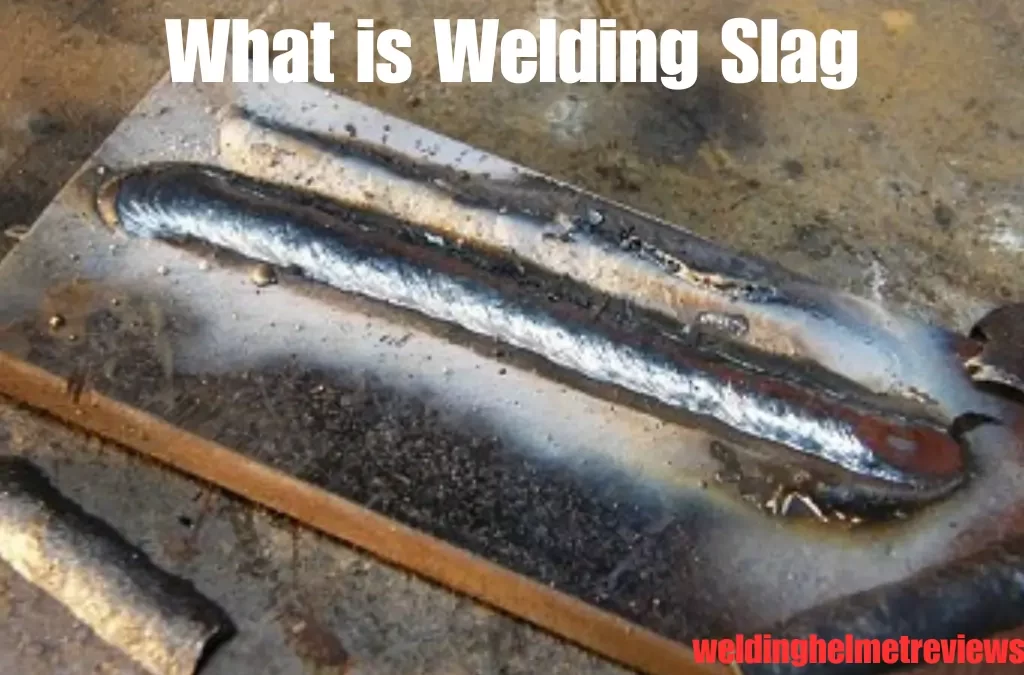Welding, an intricate fusion of science and art, involves the joining of metals through intense heat. But behind the mesmerizing sparks and molten metal lies a lesser-known yet critical component: welding slag. In this detailed article, we delve into the depths of welding slag, unraveling its composition, formation, purposes, and techniques for removal. Whether you’re a seasoned welder or a curious enthusiast, let’s shine a light on the enigmatic world of welding slag. Also, read this guide about what tack welding is.
Table of Contents
The Essentials of Welding Slag
Understanding the Phenomenon
Welding slag is a byproduct of the welding process that plays a significant role in achieving strong and clean welds. It’s a vitreous material that forms on the surface of the weld bead, shielding it from external contaminants and atmospheric gases during the cooling process. This protective layer is a result of the chemical reactions between the molten metal, the electrode, and the flux coating.
Composition and Formation
Welding slag is composed of various elements based on the type of welding and the materials involved. It typically consists of oxides, silicates, and flux compounds. During welding, the flux coating on the electrode disintegrates, producing gases that help protect the molten metal from oxidation and impurities. As the metal cools, the slag forms and solidifies, encapsulating any impurities and preventing them from affecting the weld’s integrity.
Aiding in Welding Quality
Welding slag serves as a dual-purpose shield. It not only safeguards the molten metal but also contributes to the weld’s structural integrity. The slag’s insulating properties slow down the cooling process, allowing the weld metal to solidify uniformly. This controlled cooling minimizes the risk of cracks and enhances the weld’s mechanical properties, such as strength and toughness.
Read More: What is welding beads
The Lifecycle of Welding Slag
Formation: Birth of a Protective Layer
As the welding arc generates intense heat, the electrode’s flux coating disintegrates, releasing gases that shield the molten metal from oxygen and contaminants. Simultaneously, the flux forms a liquid slag that covers the weld pool’s surface.
Solidification: Building Strength and Protection
As the molten metal cools, the slag solidifies into a protective layer. This layer traps impurities, preventing them from affecting the weld. The controlled cooling also promotes uniform solidification of the weld metal, enhancing its structural integrity.
Removal: Revealing the Pristine Weld
After welding, the slag layer is chipped or brushed away using specialized tools. This reveals the clean and sound weld beneath. Proper removal is crucial to ensure the weld’s quality and integrity.
Applications of Welding Slag
Metallurgical Benefits
Welding slag goes beyond its protective role. It contributes to the metallurgical characteristics of the weld. The controlled cooling provided by the slag minimizes the chances of cracking and distortion, resulting in a weld with superior mechanical properties.
Use in Submerged Arc Welding (SAW)
Submerged Arc Welding utilizes a granulated flux that generates a blanket of slag over the weld bead. This slag blanket prevents spatter, provides a controlled environment for the weld, and aids in achieving high-quality joints in various applications.
Surface Cleaning and Abrasive Material
Recycled welding slag finds applications as an abrasive material in industries like shipbuilding and construction. It effectively removes rust, paint, and other contaminants from surfaces, making it an environmentally friendly alternative to traditional abrasive materials.
Methods of Welding Slag Removal
Chipping Method
The chipping method involves using a chipping hammer to carefully remove the solidified slag from the weld bead’s surface. This method requires skill to avoid damaging the weld itself.
Wire Brushing
Wire brushing employs a wire brush to mechanically scrub away the slag layer. This method is effective for lighter slag residues and leaves a clean surface ready for inspection.
Grinding Technique
In this method, a grinding wheel or abrasive disc is used to grind away the slag layer. It’s suitable for thick slag deposits and ensures a smooth, polished finish.
Conclusion: Unveiling the Crucial Role of Welding Slag
In the intricate world of welding, the unassuming welding slag plays a vital role in ensuring strong, clean, and quality welds. From its formation to its applications, we’ve explored the diverse aspects of this essential component. The protective shield it provides, along with its metallurgical benefits, contribute to welds that stand the test of time. As you embark on your welding journey, remember the significance of welding slag in achieving perfection in every weld.
Read More: What is welding beads
FAQs About Welding Slag
Is welding slag harmful to health?
Welding slag, once solidified, is generally not harmful. However, during the welding process, the fumes and gases produced can be hazardous. Proper ventilation and safety measures are essential.
Can I reuse welding slag?
While recycling welding slag is possible, it’s essential to consider its composition and intended use. Some types of slag can be recycled as abrasive materials, but not all slag is suitable for reuse.
Why does slag vary in appearance?
The appearance of welding slag can vary due to factors such as the type of welding, the materials being welded, and the composition of the flux coating. Different metals and fluxes result in different slag colors and textures.
What happens if I don’t remove the welding slag?
Leaving welding slag on a weld can lead to decreased weld quality. The slag can trap contaminants and affect the integrity of the joint, potentially leading to weld defects or failures.
Can slag affect the appearance of the final weld?
Yes, welding slag left on the surface of the weld can impact its appearance. It may result in a rough or uneven surface texture. Proper slag removal ensures a clean and aesthetically pleasing weld.
Are all welding slags the same?
No, welding slags can vary significantly based on factors like the welding process, the materials used, and the type of flux coating. Different types of slag have distinct characteristics and purposes.
Read More: How Many Welding Types Are There?

James is a welding expert, accomplished author, and trusted guide with over 8 years of experience in the industry. With his in-depth knowledge and engaging writing style, James has become a true authority in the field, offering readers and clients invaluable expertise and insights to take their welding skills to new heights.

